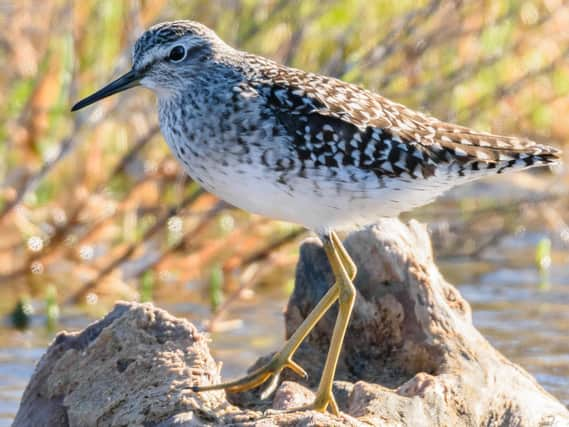Rare bird numbers reach an all time high but experts warns some are still struggling in independent report


The RBBP, funded by the Joint Nature Conservation Committee, Royal Society for the Protection of Birds and the British Trust for Ornithology compiles data from conservationists, scientists and thousands of volunteer birdwatchers in order to track the progress of the country’s rarest breeding birds.
The results listed in its latest report, focus on the 2018 breeding season which found 10 rare species have been counted at record levels.
Advertisement
Hide AdAdvertisement
Hide AdThe report said while the increased counts for two of these species, the shoveler and common redpoll, may be down to annual fluctuations in numbers, along with a “welcome increase” in efforts to find them, the other eight, great white egret, Eurasian spoonbill, Mediterranean gull, bittern, common crane, goshawks, red-necked phalaropes and wood sandpipers, have been doing “increasingly well” with many continuing to “break records” year on year as they recover from declines or colonise the UK for the first time.
But while these counts have been welcomed, Mark Eaton, Secretary of the RBBP, warned there were a number of species which are still struggling.
“Unfortunately, not all species are prospering,” he said.
“There were fewer quails reported than in any year since 1991, slavonian grebes and little terns continue to struggle, and only one pair of Montagu’s harriers bred following the death of several individuals returning from their wintering grounds in Africa.”
Mr Eaton said this report also included turtle doves for the first time as the population of this once common bird has “plummeted so fast” it is now officially regarded as a rare species.
Advertisement
Hide AdAdvertisement
Hide AdA turtle dove project is underway on the North York Moors which is working to help improve the habitat for these birds and build up numbers.
Mr Eaton said they are now planning the first national survey specifically for the species.
“This first year of data collection has improved our knowledge of the UK’s remaining Turtle doves and the first national survey is planned for next year.”
The RBBP report said increasing awareness and improvements in site management and habitat creation has also helped numbers of two species which were once extinct in the UK.
Advertisement
Hide AdAdvertisement
Hide AdThe reintroduced common crane recorded 46 breeding pairs in 2018 and numbers of bittern, which has been increasing year on year for the past 13 years, recorded 213 males in 2018.
It also said some of the success seen in the UK could, in part, be down to greater protection of birds and their habitats across Europe. This, it said, has helped the increase in great white egret, Eurasian spoonbill and Mediterranean gull.
In addition, avocets have now exceeded 2,000 pairs over a five-year average and have also bred in Scotland for the first time, with the RSPB reporting a pair raising two chicks on its Skinflats reserve.
Dawn Balmer, chairman of RBBP said it would like to thank everyone who contributed data for the report.
Advertisement
Hide AdAdvertisement
Hide AdSupport The Yorkshire Post and become a subscriber today. Your subscription will help us to continue to bring quality news to the people of Yorkshire. In return, you'll see fewer ads on site, get free access to our app and receive exclusive members-only offers. Click here to subscribe.Link to use: https://www.yorkshirepost.co.uk/subscriptions